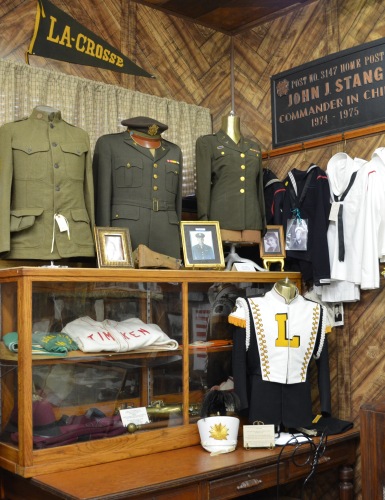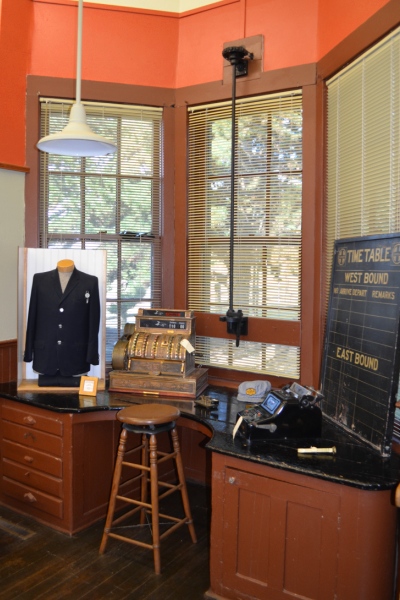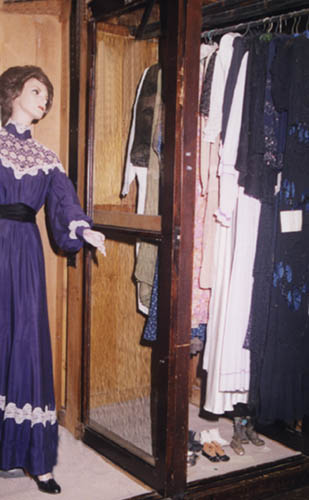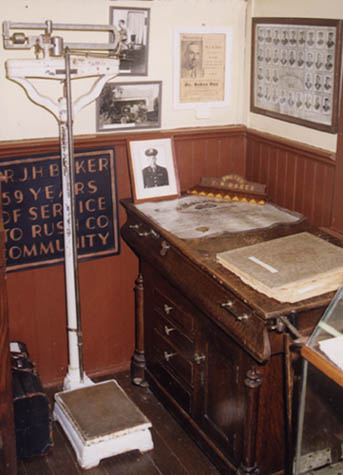The Rush County Historical Museum
Rush County Kansas, and now covered with modern towns, paved roads, cattle ranches, and fields of wheat were once open prairie. First the land was home to several tribes of Native Americans and great herds of bison. Then, travelers (pioneers) from the east began to cross over the land, headed for the west to settle in Oregon or search for gold. By 1854 this area was part of what was known as Kansas Territory, named for the Kansa Indian Tribe indigenous to the area… White travelers kept crossing the land, some deciding to settle, until 1861 when Kansas was accepted as a state of the union. The first documented pioneers to settle in Kansas made their homes on the prairie in the 1850s. These pioneers and those that followed chose to make their homes and build towns near river valleys, railroads, and military forts. That brings us to our story…
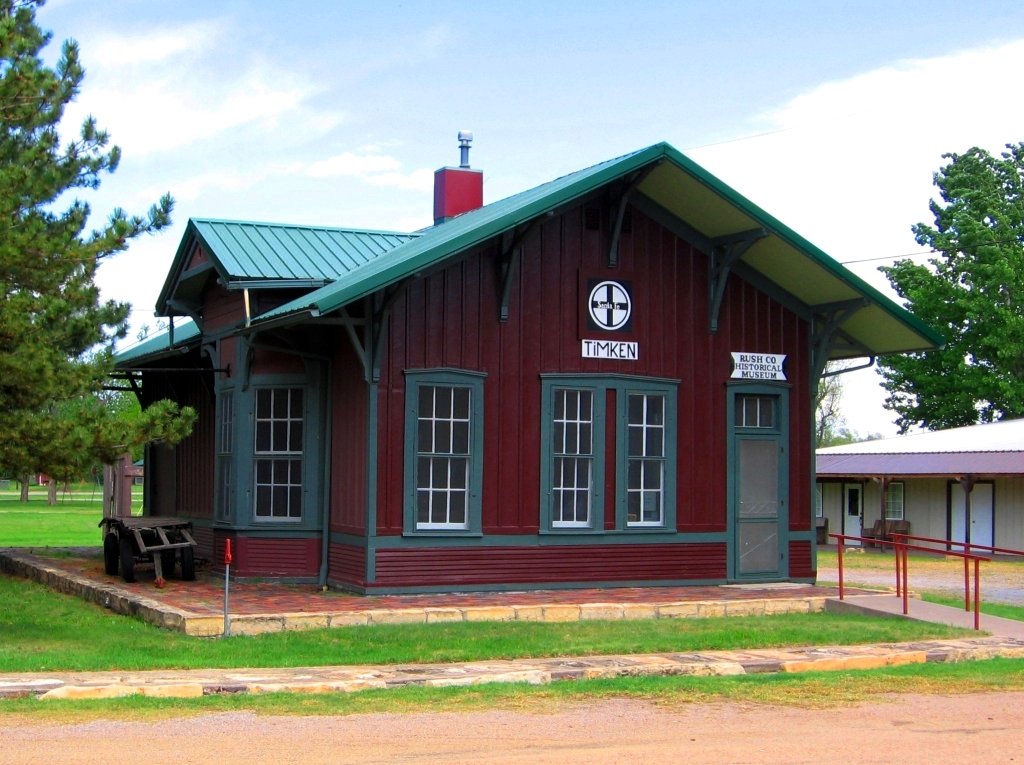
The wagons had finally stopped for the night. In the light of dusk they were able to look for the first time at the place they were going to call home. After crossing thousands of miles of prairie, this looked just the same, open land with few areas of relief and only a few trees along the Walnut Creek. The land was a prairie, open and wild, they could hear the coyotes calling in the distance and the fuel they gathered for their first meal attested to the fact that bison were plentiful. While traveling along the Fort Hays-Fort Dodge trail they had also seen deer, pheasants, and prairie chickens. Tomorrow they would start digging a dugout for a home, with few trees they must make their home of sod and the women would start gathering branches from the willow trees or stalks from the beautiful native sunflowers to cure and weave into thatches for the roof. Nearby was a trading post and stockade where they could get supplies and go for protection. It was 1869, and a good time to start a new life.
Pioneer spirit seemed to be contagious in the east, more and more people were traveling the trails and many stopped near Walnut Creek. With so many people living near each other, a community was forming. Where once there was only a trading post and stockade, now stood many buildings made of limestone. Similar communities were developing throughout Kansas so the government began to divide the state into counties. First, the governmental surveyors criss-crossed the whole area, recording data and making maps. Then on December 5, 1874, Governor Thomas Osborn formally named the county Rush, in honor of Captain Alexander Rush, Company H of the 2nd Kansas Colored Infantry. The Govenor appointed officers of Rush County who designated Walnut City, as the first county settlement, as the county seat. In the act of designating the county seat the officers changed the name from Walnut City to Rush Centre.
As a result of a governmental re-survey, two, once peaceful, neighboring communities are now exchanging threats and gunfire. Four miles of the southern county boundary have been given to neighboring Pawnee County shifting the center of Rush County from the town of Rush Centre to LaCrosse. By tradition the county seat is located in the town that is nearest to the center of the county. County officers quickly moved county records to LaCrosse, however, Rush Centre citizens believe that the county seat should remain in Rush Centre so they retrieve the records my night. La Crosse citizens are resentful of the change and quickly reclaim the records in a nightly raid.
Finally, after years of fighting over the county seat and stealing records, LaCrosse has been declared by the state to be the permanent county seat.
A Museum to Tell the Story
The primary mission of the Rush County Historical Museum is to tell the story and preserve the history of the people of Rush County. The museum is housed in the former Timken, Kansas Santa Fe Depot. The depot was constructed in 1887 by the Atchison, Topeka, and Santa Fe Railroad to serve this small community in southeast Rush County. When the building was threatened with demolition, the historical society came to its rescue. Learn about the history of the depot and Timken's famous roots.
The museum houses a large collection of photographs, albums, and scrapbooks that preserve details of the history of the county. The museum is currently undertaking a project to digitize and preserve these fragile photographs and documents. Eventually these collections will be readily available for researchers or those interested in learning more about the county.
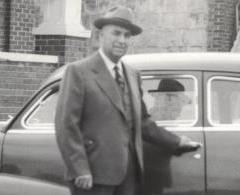 One of Rush County's most well-known citizens was Dr. J.H. Baker, a early 20th century physician who
dedicated his life to helping the citizens of Rush County practicing for over 50 years. Dr. Baker, a veteran of both World Wars, was best known for establishing a 28-bed hospital, the first in
Rush County. The museum houses a collection of his tools and equipment.
One of Rush County's most well-known citizens was Dr. J.H. Baker, a early 20th century physician who
dedicated his life to helping the citizens of Rush County practicing for over 50 years. Dr. Baker, a veteran of both World Wars, was best known for establishing a 28-bed hospital, the first in
Rush County. The museum houses a collection of his tools and equipment.
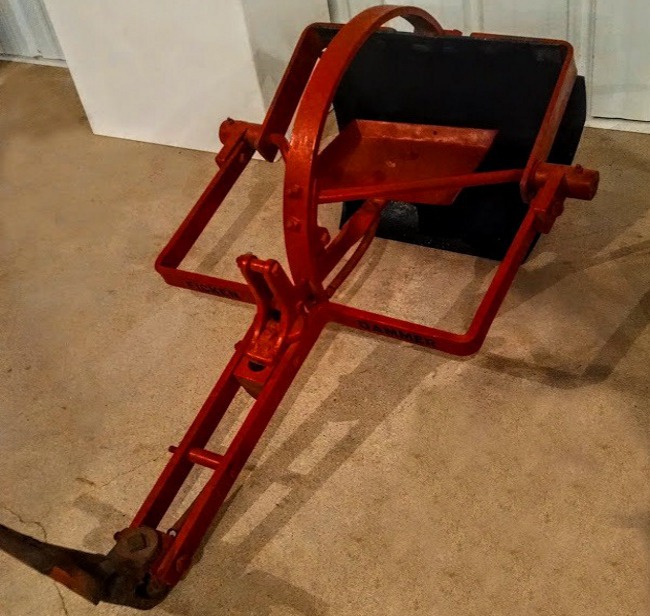 A variety of farm equipment and tools illustrates the perseverence and ingenuity of the county's citizens. The lifestyle of the pioneer
farmer demanded long hours and hard work from sunrise to sunset. To help overcome these hardships, pioneer farmers were often forced
to become inventors. The “Ficken Dammer”, patented March 29, 1938 by Elmer Ficken of Bison, Kansas, is a unique agricultural implement on display in the museum.
According to his patent application, “…in the preparation of crop land, it is the practice to plow furrows or ditches by means of lister plows and to block the furrows
at intervals to hold the water and soil therein and thereby obviate soil erosion.”
A variety of farm equipment and tools illustrates the perseverence and ingenuity of the county's citizens. The lifestyle of the pioneer
farmer demanded long hours and hard work from sunrise to sunset. To help overcome these hardships, pioneer farmers were often forced
to become inventors. The “Ficken Dammer”, patented March 29, 1938 by Elmer Ficken of Bison, Kansas, is a unique agricultural implement on display in the museum.
According to his patent application, “…in the preparation of crop land, it is the practice to plow furrows or ditches by means of lister plows and to block the furrows
at intervals to hold the water and soil therein and thereby obviate soil erosion.”
Pioneer lifestyle was not without some refinement. Women's clothing exhibited dignity and grace. The museum exhibits a fine collection of men's, women's and children's attire from a variety of the county's social classes. Furniture and accessories further accentuate the aspects of pioneer and early 20th century social life. Church, theatrical events, and fraternal organizations were also an important part of Rush County society. A variety of memorabilia is preserved from organizations such as the Grand Army of the Republic, early churches, and theatrical events. Historical research is ongoing with the Historical Society. Summaries of some of the research projects may be viewed online.
Inside the Museum
Come visit the museum to learn more!
The Rush County Historical Museum, 202 West 1st Street, La Crosse, Kansas 67548
